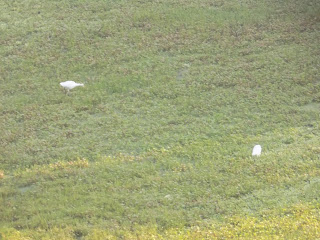Black Drongo (Dicrurus macrocercus) இரட்டைவால் குருவி அல்லது கரிக்குருவி
Black Drongo showing its front view with double tail and sitting on Electrical wire in front of Annakkili Amma Research Institute-AARI (Photo Credit: U Elaya Perumal)
The black drongo is a small Asian passerine bird of the drongo family Dicruridae it is also known as King Crow. It is a common resident breeder in much of tropical southern Asia from southwest Iran through India, Bangladesh, and Sri Lanka east to southern China and Indonesia and accidental visitors of Japan.
Black Drong side view (Photo Credit: U Elaya Perumal)
The black drongo is a very common bird in Chennai city's Marshlands. Locally it is called double-tailed Kuruvi i.e., Double-tailed bird. This bird has been observed from areas like Madipakkam wetland, Medavakkam Wetland, Pallikaranai Marshland, Tambaram, Chromepet, Pallavaram, Knathanchavadi, Kovalam Beach area, Thiruvanmiyur, Mylapore other places also it could be noticed but have not personally observed. In the case of Medavakkam wetland, there are 2 pairs of black drongo near Annakkili Amma Research Institute (AARI). These can be observed from early morning (6am) to all day. sometimes they may be busy fighting with crows or Red-vented Bulbul.
Black drongo (Photo Credit: U Elaya Perumal)
An adaptable songbird of open areas such as farmland, forest edge, meadows, wetlands, and fields and a common sight as a familiar dark silhouette perched on wires, fences, or snags. Black plumage flashes blue and green iridescence in a favorable light, though much less so than in Hair-crested or Bronzed Drongo. A pugnacious species, frequently chasing away larger birds with repeated dives and harsh chattering calls. A skilled mimic of other species, and a strong songster in general, delivering a wide range of pleasant fluty calls, harsh chattering, nasal notes, and high sharp whistles.
Black drongo (Photo Credit: U Elaya Perumal)
Feeding on insects, it is common in open agricultural areas and light forests throughout its range, perching conspicuously on a bare perch or along power or telephone lines.
Black drongo (Photo Credit: U Elaya Perumal)
The species is famous for its aggressive behavior towards much larger birds, such as crows, never hesitating to dive-bomb any birds of prey that invade its territory. Smaller birds often nest in the well-guarded vicinity of a nesting Black Drongo. The Black Drongo has been introduced to some Pacific islands, where it has thrived and become abundant to the point of threatening and causing the extinction of native and endemic bird species there.
Black drongo in aggressive mode, this photo clearly shows the emotion and aggressiveness of the bird (Photo Credit: U Elaya Perumal)
This bird is glossy black with a wide fork to the tail. Adults usually have a small white spot at the base of the gape. The iris is dark brown (not crimson as in the similar Ashy Drongo). The sexes cannot be told apart in the field. Juveniles are brownish and may have some white barring or speckling towards the belly and vent, and can be mistaken for the White-bellied Drongo. First-year birds have white tips to the feathers of the belly, while second-years have these white-tipped feathers restricted to the vent.
Black drongo (Photo Credit: U Elaya Perumal)
They are aggressive and fearless birds, and although only 28–cm (11–in) in length, they will attack much larger species that enter their nesting territory, including crows and birds of prey. This behavior led to their former name of King Crow. They fly with strong flaps of the wing and are capable of fast maneuvers that enable them to capture flying insects.
Black drongo (Photo Credit: U Elaya Perumal)
With short legs, they sit upright on thorny bushes, bare perches, or electrical or telephone wires. They may also perch on grazing cattle. They are capable of producing a wide range of calls but a common call is a two-note tee-hee call resembling that of the Shikra (Accipiter badius).
All Photographs were taken near Annakkili Amma Research Institute (AARI) which is located at Medavakkam Wetland area.


























































